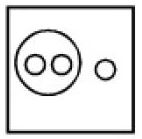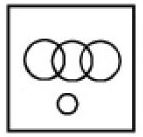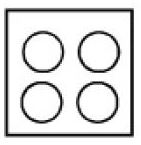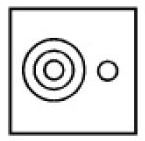Venn diagram Practice Questions & Answers
Directions: In the question one/two statements are given, followed by two conclusions/assumptions, I and II. You have to consider the statements to be true even if they seem to be at variance from commonly known facts. You have to decide which of the given conclusion/assumptions, if any, follows from the given statements. Statements: 1. Tigers do not fly. 2. Emus do not fly. Conclusions: I. Tigers are birds. II. All birds cannot fly.
Directions: In the question one/two statements are given, followed by two conclusions/assumptions, I and II. You have to consider the statements to be true even if they seem to be at variance from commonly known facts. You have to decide which of the given conclusion/assumptions, if any, follows from the given statements.
Statements:
1. Tigers do not fly.
2. Emus do not fly.
Conclusions:
I. Tigers are birds.
II. All birds cannot fly.1). Either I or II follows
2). Only I follows
3). Only II follows
4). Neither I nor II follows
Two statements are given followed by two conclusions I and II. You have to consider the statements to be true even if they seem to be at variance from commonly known facts. You are to decide which of the given conclusions, if any, follow from the given statements. Indicate your answer. Statements: Teaching is an art. Drawing is also an art. Conclusions: I. All artists are teachers. II. All artists know to draw pictures.
Two statements are given followed by two conclusions I and II. You have to consider the statements to be true even if they seem to be at variance from commonly known facts. You are to decide which of the given conclusions, if any, follow from the given statements. Indicate your answer.
Statements:
Teaching is an art.
Drawing is also an art.
Conclusions:
I. All artists are teachers.
II. All artists know to draw pictures.1). Only Conclusion I follows
2). Only Conclusion II follows
3).
Neither Conclusion I nor II follows
4). Both Conclusions I and II follow
Consider the given statement/s to be true and decide which of the given conclusions/assumptions can definitely be drawn from the given statement. Statement: 1. All animals are fourfooted. 2. Dog has two legs. Conclusion: I. Dog is not an animal. II. Dog is an animal.
Consider the given statement/s to be true and decide which of the given conclusions/assumptions can definitely be drawn from the given statement.
Statement:
1. All animals are fourfooted.
2. Dog has two legs.
Conclusion:
I. Dog is not an animal.
II. Dog is an animal.1). If only I follows
2). If only II follows
3). If neither I nor II follows
4). If both I and II follow
Identify the diagram that best represents the relationship among the given classes.Olympic games, Tennis, Wrestling, Ludo
Identify the diagram that best represents the relationship among the given classes.
Olympic games, Tennis, Wrestling, Ludo
1).
2).
3).
4).
Identify the diagram that best represents the relationship among the given classes.Keyboard, Mouse, Input Device, Output Device, Computer
Identify the diagram that best represents the relationship among the given classes.
Keyboard, Mouse, Input Device, Output Device, Computer
1).
2).
3).
4).






